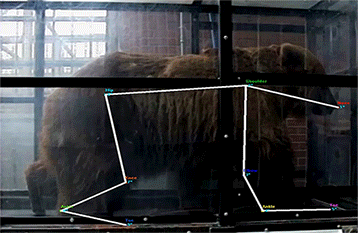
Field metabolic rates of terrestrial and marine mammals in comparison to the predicted basal metabolic from Kleiber (1975). See Williams et al. (2020) for additional details.
Large mammals represent some of the most threatened species on the planet. Their large body size necessitates larger habitats and larger absolute food requirements than smaller mammals. As a result, these species have often come in conflict with humans. They also exhibit lower reproductive rates and lower population densities than most mammals. My research evaluates the energy expenditure, biomechanics, food demands, and spatial ecology of large mammals in relation to other mammalian species to understand the unique life-history requirements of these species to aid conservation and management decisions.
This research has been in collaboration with the U.S. Geological Survey, Institute for Conservation Research, San Diego Zoo Global, University of California Santa Cruz, Polar Bears International, Oregon Zoo, Alaska Zoo, and Bear Center at Washington State University.
 An adult female grizzly bear walking on a metabolic treadmill at the Bear Center at Washington State University for energetics research. See Pagano et al. (2018) for additional details.
An adult female grizzly bear walking on a metabolic treadmill at the Bear Center at Washington State University for energetics research. See Pagano et al. (2018) for additional details.